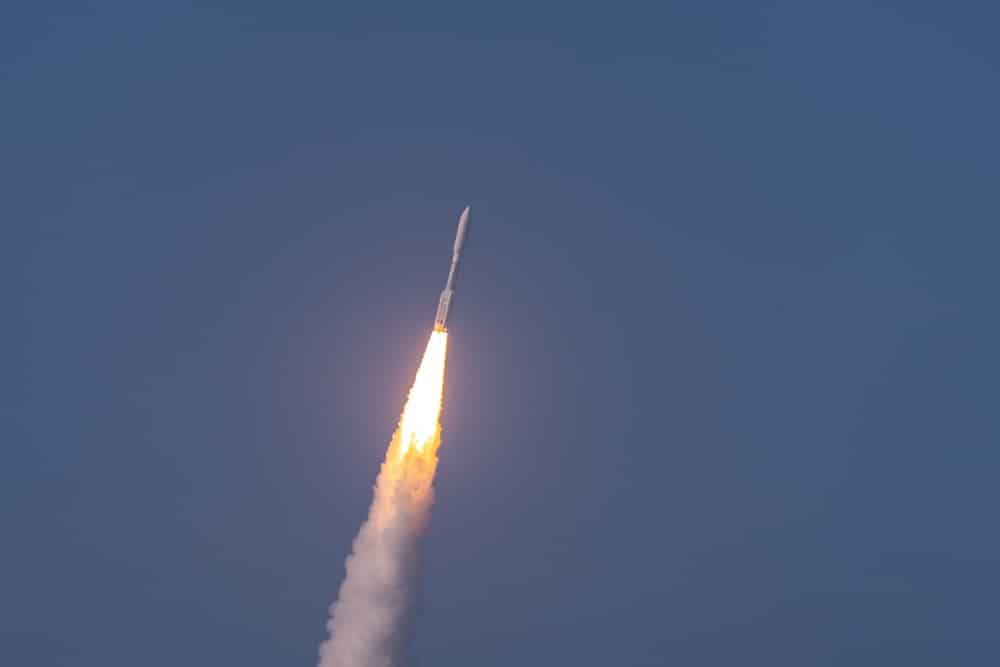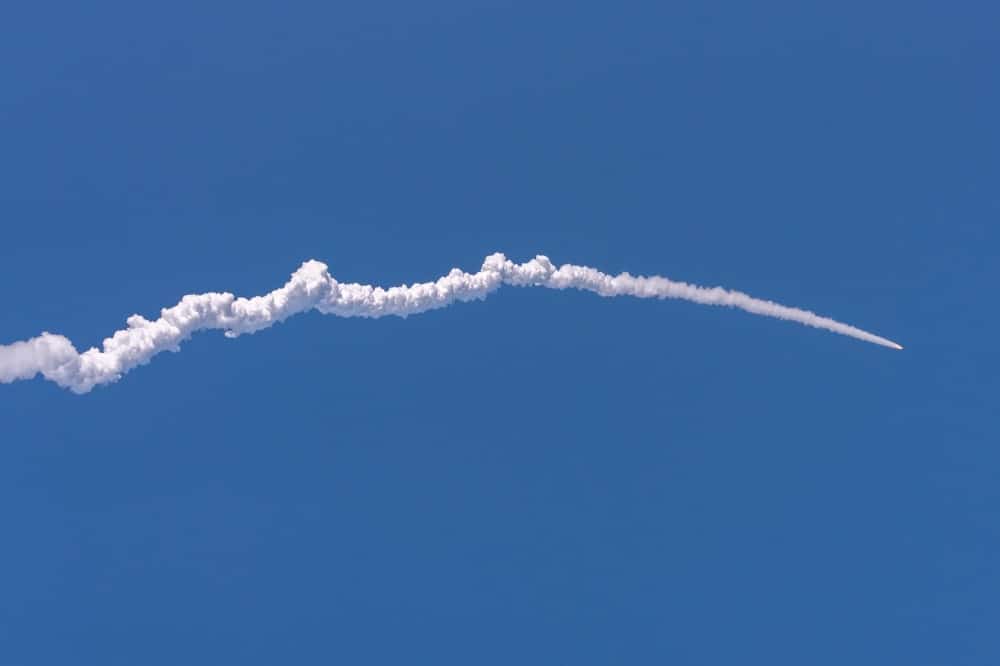The last in a new generation of military satellites launched from the Space Coast on Thursday afternoon, as national security missions continue to move forward despite coronavirus concerns.
At 4:18 p.m. local time, a United Launch Alliance Atlas V rocket took off from Cape Canaveral Air Force Station carrying the sixth and final Lockheed Martin-built Advanced Extremely High Frequency (AEHF) communications satellite. The mission took off late into a planned two-hour launch window due to a hydraulics issue.
The satellite that launched Thursday is part of the $15 billion AEHF program, which has been launching the spacecraft on ULA rockets since 2010. The advanced satellites have three times better accuracy and eight times improved anti-jamming capabilities to provide better communication for U.S., U.K., Canadian and Dutch troops around the world. They’ll be part of the new constellation that will replace the current MILSTAR satellites in orbit since the early 2000s.

An Atlas V AEHF-6 rocket successfully launches from Space Launch Complex-41 at Cape Canaveral Air Force Station, Fla., March 26, 2020. The launch of the AEHF-6, a sophisticated communications relay satellite, is the first Department of Defense payload launched for the United States Space Force. (U.S. Air Force photo by Joshua Conti)
The mission also carried a new blue logo on the payload fairing atop the Atlas V rocket: the symbol of the newly formed U.S. Space Force. The launch was the first for the branch’s Space and Missile Systems Center.
“It’s a really, really important launch today,” said Lt. Gen. John F. Thompson, commander of the Space and Missile Systems Center in California. “Even in the face of a global pandemic … we must continue to perform mission-essential tasks.”

An Atlas V AEHF-6 rocket successfully launches from Space Launch Complex-41 at Cape Canaveral Air Force Station, Fla., March 26, 2020. The launch of the AEHF-6, a sophisticated communications relay satellite, is the first Department of Defense payload launched for the United States Space Force. (U.S. Air Force photo by Joshua Conti)
While conducting the mission, Thompson said teams took “every precaution” to ensure its workforce was safe.

An Atlas V AEHF-6 rocket successfully launches from Space Launch Complex-41 at Cape Canaveral Air Force Station, Fla., March 26, 2020. The launch of the AEHF-6, a sophisticated communications relay satellite, is the first Department of Defense payload launched for the United States Space Force. (U.S. Air Force photo by Joshua Conti)
The Air Force’s Eastern Range said it plans to move ahead with the remaining launches on the calendar this year for the Space Coast, even as coronavirus continues to limit operations at installations around the country.

An Atlas V AEHF-6 rocket successfully launches from Space Launch Complex-41 at Cape Canaveral Air Force Station, Fla., March 26, 2020. The launch of the AEHF-6, a sophisticated communications relay satellite, is the first Department of Defense payload launched for the United States Space Force. (U.S. Air Force photo by Joshua Conti)
___
© 2020 The Orlando Sentinel
Distributed by Tribune Content Agency, LLC.



